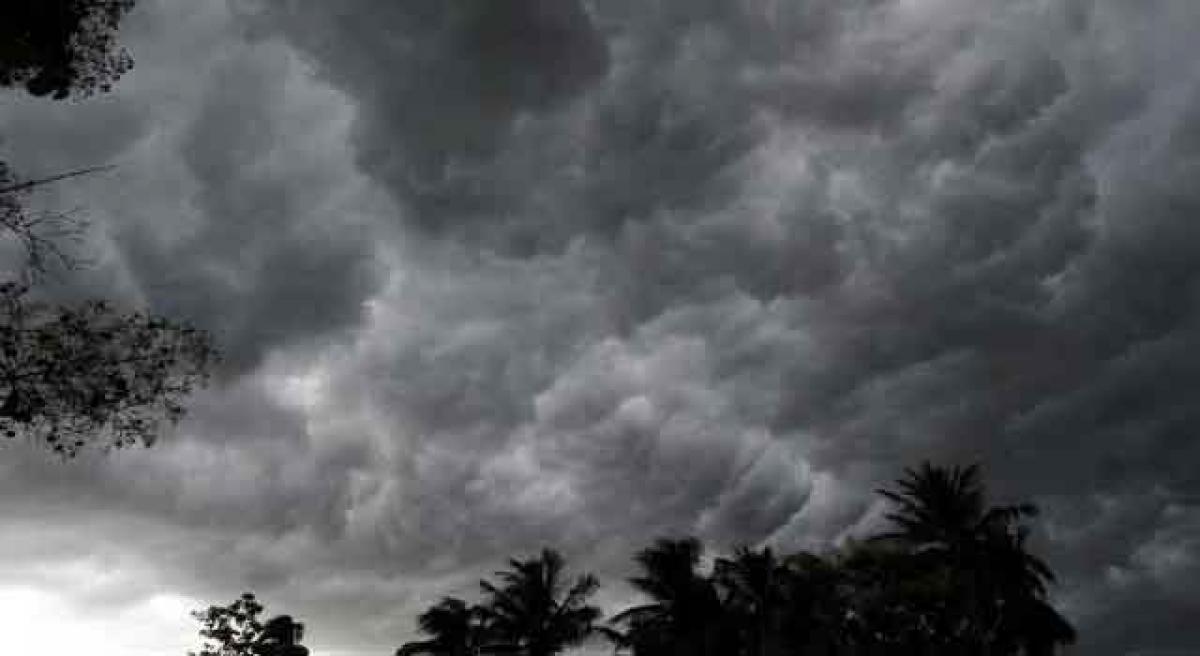Live
- Sanju Samson and Tilak Varma Shine: Record-Breaking Feats in 4th T20I Against South Africa
- India Urges $1.3 Trillion Annual Climate Support for Developing Nations
- Bad air: 106 shuttle buses, 60 extra Metro trips planned to make Delhiites give up cars
- WHO reports declining monkeypox cases in Congo
- CM Attends Kotideepotsavam on Kartika Purnima
- PKL Season 11: Raiding trio of Devank, Ayan, Sandeep help Patna Pirates rout Bengal Warriorz
- Food waste crisis fuels sustainable practices across APAC food & beverage industry: Report
- AI helps erase racist deed restrictions in California
- ATMIS completes third phase of troops' drawdown in Somalia
- PM Kisan Samman Nidhi scheme bringing smile to Nalanda farmers
Just In

It is the time of the year when people across the sub-continent start to look beseechingly at the skies for the season to end the tyranny of a scorching sun in leaden skies. But the monsoon, bringing rains - plentiful ones, that is - doesn\'t only mean better or changed weather or the difference between prosperity and failure but more starkly, between life and death itself. And in it is a great sto
It is the time of the year when people across the sub-continent start to look beseechingly at the skies for the season to end the tyranny of a scorching sun in leaden skies. But the monsoon, bringing rains - plentiful ones, that is - doesn't only mean better or changed weather or the difference between prosperity and failure but more starkly, between life and death itself. And in it is a great story too but not told much.
The monsoons were geographically once just deemed seasonally reversing winds that caused rainfall, but are now seen as part of a much larger system. They are not confined to South Asia though it is from here they derive their name and play their most significant role - for it is the rains they bring that revitalises the parched subcontinent, ensures a bountiful harvest and revives people wilting under the heat. The season has therefore been well featured in Indian culture - mostly.
In the words of a celebrated Indian poet, it comes towards you like an orchestra, and not surprisingly, has inspired some of our loveliest music, ragas which evoke distant thunder and falling rain. For centuries our artists have painted monsoon pictures and our poets serenaded the monsoon... However, it has scarcely received its due in prose works, save references in recollections of Europeans in India - especially the British, well accustomed to rain but still astounded by the monsoon.
And since it is the British, who pioneered plumbing its mysteries (right from Edmund Halley - of the comet fame - in the 17th century), it is perhaps ordained or fitting at least that the pioneering, the definitive, and, possibly the sole, work chronicling the anticipation, arrival, spread and effect of the season should come from one of them.
And Alexander Frater's ‘Chasing The Monsoon: A Modern Pilgrimage Through India’ (1990) never disappoints. No stranger to tropical weather or torrential rain, Frater, born in the South Pacific island of New Hebrides (now Vanuatu) in 1937, admits the first sounds he ever heard were of falling rain.
Another key formative influence was a luridly tinted Edwardian print of a deluge inundating a range of steep grassy hills purporting to represent Cherrapunji or ‘The Wettest Place of Earth’, presented to his father, a missionary and weather buff, whose long-standing dream destination it was.
But, as happened, it was instead in the mid-1980s that a bizarre chain of events began leading me via a desert oasis in Chinese Turkestan and a famous London hospital, towards Cherrapunji in place of my father. Frater, who was balefully contemplating a sedentary life after a mysterious injury on a jeep ride across the Karakoram Highway, met an Indian couple at the hospital, who enticed him into visiting India to experience the monsoon.
Thus came his most singular journey in 1987 in which he welcomed the monsoon at Trivandrum, raced it to Cochin, Goa and Bombay, awaited it in New Delhi, where he fought desperately with the bureaucracy for permission to visit the northeast. After delays which even entailed a return home to wait, he finally secured permission for Shillong only and then managed to swing a Cherrapunji permit too but while on the way, had to stop overnight in Calcutta and view its monsoon experience too.
Frater paints a most engaging, witty - and enduring - picture of his experiences, which spans weather extremes, vistas beautiful and ugly and a colourful cast. These include writers (the quote on monsoon's cultural effects above is by Kamala Das), weathermen, journalists (Pritish Nandy), astrologers, hamstrung civic functionaries, bureaucrats both obstructive and understanding, lethargic taxi drivers, sullen shopkeepers, helpful hotel staff and travel agents, astrologers, ayurvedic experts, spice merchants, fearless pilots, eccentric inventors, overbearing but not unfriendly intelligence men and more.
The treatment is sometimes most Wodehousian - especially the restaurant scene where a party of Indians entertaining an Australian ignore their guest and his queries to carry on a spirited discussion on varieties of mangoes. It is Rajiv Gandhi's India Frater visits, but save the unpredictable telephone system and some other deficiencies then, many issues - the wide fears of poor monsoons, the belated government efforts to assuage such eventualities, civic bodies' incapacity to deal with rain's aftermath, anti-outsider stirs in the northeast, debates on the future of the Congress - are still around today and save the book from feeling dated.
No mere curiosity about a foreigner's strange travels, Frater's account is a perceptive look at the vagaries of weather and their effect on society and economy and a vivid but sympathetic description of India at both its best and worst. Freely available, it deserves to be better-known - and read!
By:Vikas Datta

© 2024 Hyderabad Media House Limited/The Hans India. All rights reserved. Powered by hocalwire.com







